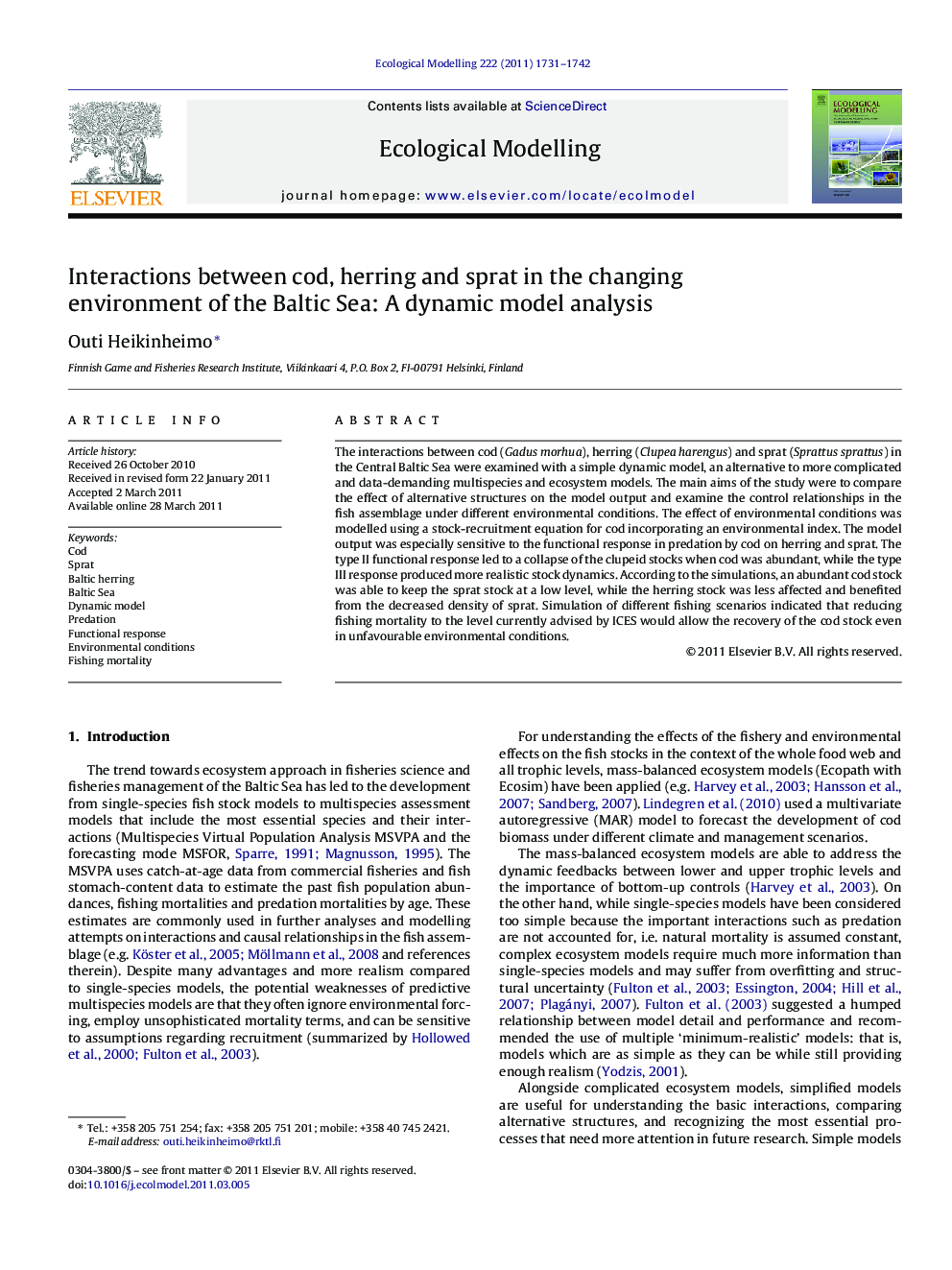| Article ID | Journal | Published Year | Pages | File Type |
|---|---|---|---|---|
| 4376834 | Ecological Modelling | 2011 | 12 Pages |
The interactions between cod (Gadus morhua), herring (Clupea harengus) and sprat (Sprattus sprattus) in the Central Baltic Sea were examined with a simple dynamic model, an alternative to more complicated and data-demanding multispecies and ecosystem models. The main aims of the study were to compare the effect of alternative structures on the model output and examine the control relationships in the fish assemblage under different environmental conditions. The effect of environmental conditions was modelled using a stock-recruitment equation for cod incorporating an environmental index. The model output was especially sensitive to the functional response in predation by cod on herring and sprat. The type II functional response led to a collapse of the clupeid stocks when cod was abundant, while the type III response produced more realistic stock dynamics. According to the simulations, an abundant cod stock was able to keep the sprat stock at a low level, while the herring stock was less affected and benefited from the decreased density of sprat. Simulation of different fishing scenarios indicated that reducing fishing mortality to the level currently advised by ICES would allow the recovery of the cod stock even in unfavourable environmental conditions.
► Interactions between cod, sprat and herring were studied with a dynamic model. ► An environmental index was incorporated in the stock-recruitment equation for cod. ► In the simulations the type III functional response produced realistic dynamics. ► An abundant cod stock was able to keep the sprat stock at a low level. ► Low fishing mortality would allow recovery of the cod stock even in bad conditions.
